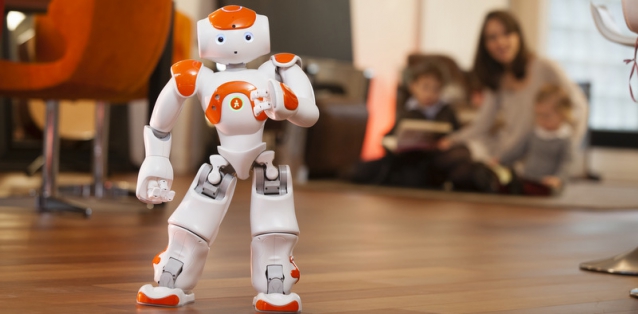NAO is the Michael Phelps of robots. This humanoid is not just the winner of RoboCup soccer (it has its own league), but it is also ready to take over the robotic dance forum in the upcoming Robotic Idol. To the average reader, this may sound like a cute, childlike event, however the ability for a machine to dance like Rihanna or “Bend It Like Beckham” is no trivial pursuit.
NAO is quickly becoming the gold standard of the next generation of humanoid robots. NAO costs roughly around $5,000, which is a bargain compared to its giant cousin, Honda’s humanoid ASIMO, which is about five times the height of NAO and would cost approximately $150,000 a month to lease.
NAO is the brainchild of Aldebaran Robotics, a research company founded by Bruno Maisonnier in 2005. Aldebaran boasts of its “fully-programmable and interactive humanoid robot equipped with state-of-the-art motion, vision, tactile and audio capabilities” as well as its ability to “walk on different surfaces, track and recognize faces and objects, express and understand emotions, and react to touch and interact by voice.”
“Developing natural, conversational interactions with humanoid robots is a challenging and pioneering area of robotics. Our robots have to express and understand emotions, and, for this, there needs to be expression in their voice that speaks to their personality and matches their body language,” said Maisonnier, who is also the CEO of Aldebaran. Maisonnier’s crew is building a library of applications for education, autism therapy, university research and engineering R&D projects.
Today, there are 5,000 NAOs in existence across the globe. This little army could eventually be the elves in the workshop of industry and government (maybe Sebelius should order a few to fix the Obamacare website). In my opinion, NAO represents a new way of commercial-born robotic innovations, which, when open-sourced, enter a new exciting realm of possibilities.



